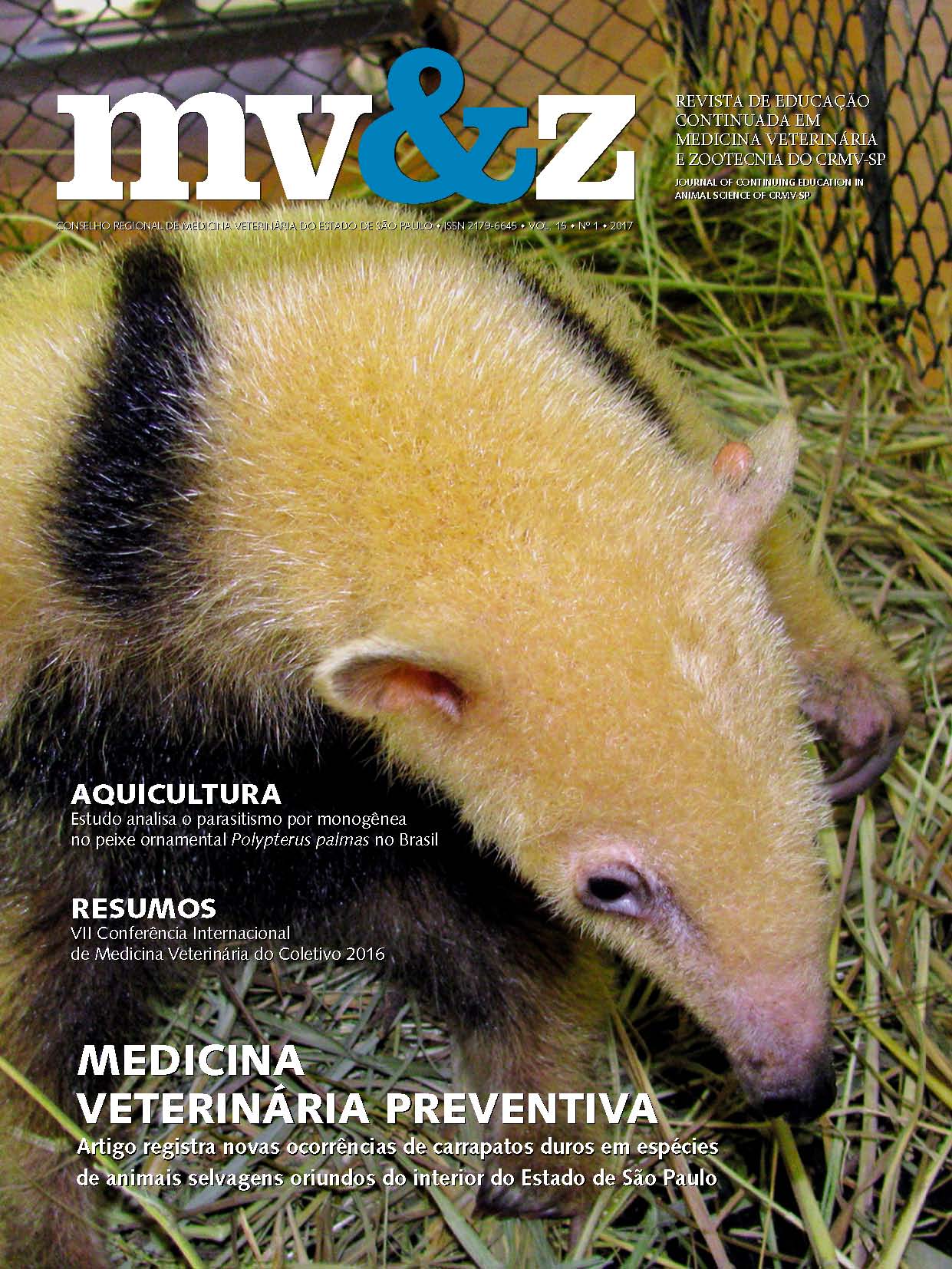Ixodídeos coletados parasitando animais selvagens no Zoológico de Sorocaba, Estado de São Paulo, Brasil
Conteúdo do artigo principal
Resumo
Carrapatos são aracnídeos hematófagos que parasitam animais domésticos e uma diversidade de animais silvestres nos ambientes terrestres do planeta. Este trabalho registra novas ocorrências de carrapatos duros em espécies de animais selvagens oriundos do interior do Estado de São Paulo, e encaminhados ao zoológico do município de Sorocaba. Durante os anos de 2014, 2015 e 2016, utilizando-se chaves taxonômicas, foram identificados ixodídeos em animais silvestres atendidos no parque zoológico. No total, foram coletados 675 espécimes de 14 espécies diferentes de carrapatos, de um réptil, de quatro aves e de 31 mamíferos, totalizando 17 espécies distintas de animais selvagens analisados. Este trabalho registra, pela primeira vez, adultos de Amblyomma sculptum parasitando cágadode- barbicha (Phrynops geoffroanus) e ema (Rhea americana), assim como ninfas dessa mesma espécie de carrapato em águia-cinzenta (Urubitinga coronata), além de ninfa de Amblyomma parkeri em gavião-pega-macaco (Spizaetus tyrannus) e ninfa de Amblyomma brasiliense em veado-catingueiro (Mazama gouazoubira) no Brasil. Neste trabalho, ainda foram encontrados vetores de riquetsioses do grupo da febre maculosa, tais como Amblyomma aureolatum, Amblyomma ovale e A. sculptum, demostrando, dessa forma, que os jardins zoológicos são eficientes centros de investigação, triagem e pesquisa para diversidade de carrapatos.
Detalhes do artigo
Seção
1. Autores mantém os direitos autorais e concedem à revista o direito de primeira publicação, com o trabalho licenciado sob a Creative Commons Atribuição-NãoComercial-SemDerivações 4.0 Internacional
2. Autores têm autorização para assumir contratos adicionais separadamente, para distribuição não-exclusica da versão do trabalho publicada nesta revista (ex.: publicar em repositório institucional ou como capítulo de livro), com reconhecimento de autoria e publicação inicial nesta revista.
3. Autores têm permissão e são estimulados a publicar e distribuir seu trabalho online (ex.: em repositórios instituicionais ou na sua página pessoal) a qualquer ponto antes ou durante o processo editorial, já que isso pode gerar alterações produtivas, bem como aumentar o impacto e a citação do trabalho publicado (Veja O Efeito do Acesso Livre);
